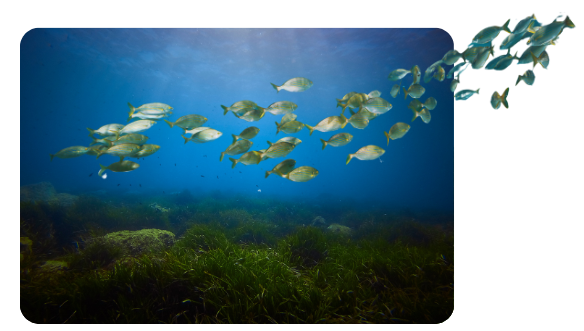Story
Promoting the use of satellite observations to improve water quality monitoring
10 February 2020
The Horizon 2020 project EOMORES has issued a white paper promoting the potential of satellite observations in fulfilling the objectives of the European Water Framework Directive.

The EU Water Framework Directive (WFD) requires that all EU Member States monitor the quality of their water bodies and take appropriate measures to improve water quality where necessary. It is up to each Member State to determine how the monitoring is carried out. This involves taking water samples for further analysis in a laboratory from set locations at given intervals; a costly and time-consuming process, particularly when the number of waterbodies is large or where sampling locations are remote.
Earth Observation (EO) through satellites can complement conventional water sampling, thereby filling information gaps resulting from infrequent visits that do not observe the (natural or other) variability within waterbodies. Satellite observations from the European Union’s Copernicus programme are freely and openly available and, once appropriately processed, provide regular, comprehensive coverage of whole water bodies. Current satellite observations are particularly suitable for medium and larger waterbodies.
The added information derived from satellites has particularly strong potential to enhance confidence in Water Framework Directive ecological status classification, by quantifying elements of environmental status that are currently not or under-reported by EU Member States. These include the frequency, onset, duration and extent of phytoplankton blooms, which negatively impact water quality.
Secondly, confidence in ecological status assessment would improve, with increased representativeness of the natural diversity of waterbodies that are monitored, their inter-annual variability and water quality trends within larger waterbodies. Moreover, using standardised approaches, it would allow better comparison and standardisation of water quality assessment across Member States, facilitating the management of transboundary waters in particular.
Finally, by increasing spatial and temporal coverage, satellite observation is expected to enhance the effectiveness of the EU Member States’ action plans through early detection of deterioration, improving knowledge of the potential extent of management impacts, improving monitoring of the effectiveness of action plans and providing information to support more strategic, in situ sampling.
In this context, the objectives set out in the EOMORE white paper for promoting the use of satellite observations in water quality monitoring, are as follows:
-
Recognition of satellite observation as an assessment method in the context of any further revision of the Water Framework Directive.
-
Creating a satellite observation expert group to harmonise metrics across countries and advise member states on best practises.
-
Referencing the use of satellite-based Earth observation metrics in the Reporting Guidance of the revised Water Framework Directive.
-
Convene a conference for the European Commission, EU Member States and Water Framework Directive authorities to agree on recommendations of common practices and reporting standards when using satellite-based water quality metrics to support the Water Framework Directive.
Dr Stefan Simis, leading author of the paper and Senior Earth Observation Scientist at Plymouth Marine Laboratory, said: “We see the huge potential that satellite observation offers in terms of global water quality monitoring and a research community ready and able to work together to provide unprecedented detail of information to help manage water resources. The biggest challenge is no longer to provide this information but to build a common capacity to use it in everyday life.”
One of the paper’s authors, Sandra Poikane, a Researcher at the Joint Research Centre and chair of the ECOSTAT working group on monitoring methods for the Water Framework Directive, commented: “The information on water quality that can be derived from satellites has clearly come a long way. It is timely to find the best complementary use of these resources to strengthen our means of realising the ambitious objectives of the Water Framework Directive.”
The EOMORES project, having come to an end in January 2020, is now launching commercial products and services for inland and coastal water quality monitoring under the same brand-name.
Related information
White paper, including executive summary: ‘Satellite-assisted monitoring of water quality to support the implementation of the Water Framework Directive’
More information on the EOMORES project at: http://eomores-h2020.eu/
Operational EOMORES services website: https://eomores.eu/
